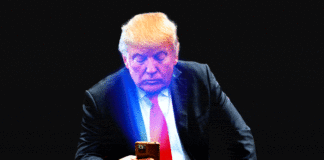An icon in the shape of an angle pointing down.
Richard Bord/WireImage via Getty Images; Screenshot
- Tesla’s new Robovan has a Chinese counterpart with the same name.
- WeRide unveiled its Robovan back in 2021.
- A separate robotics startup, Starship Technologies, filed a US trademark application for “Robovan” in 2017.
Tesla’s new Robovan was CEO Elon Musk’s novel surprise at the company’s “We, Robot” event.
But something about it wasn’t as novel — its name.
WeRide, a Chinese autonomous driving startup, unveiled its own self-driving cargo van in 2021. WeRide named its product the Robovan, and the company’s CEO, Tony Han, touted it as being at the intersection of a passenger and logistics vehicle.
“It’s an autonomous driving vehicle. If you put a seat there it can serve as a robotaxi car. If you put a cabinet there it is really a logistics car,” Han told CNBC in 2021.
“Why don’t we do both?” Han added.
WeRide said it is partnering with JMC-Ford Motors, a joint venture between state-owned automaker Jiangling Motors Corp and Ford, to manufacture the Robovan.
In May, WeRide said it obtained a license to conduct road tests for the vehicle in Guangzhou, China. On its website, WeRide said it had received “over 10,000 indication orders from a leading express delivery company” for the car.
But WeRide wasn’t the first company interested in the name “Robovan.”
In July 2017, a company called Starship Technologies filed a trademark for “Robovan,” per the United States Patent and Trademark Office.
Starship, which specializes in autonomous delivery robots, was founded by Skype cofounders Ahti Heinla and Janus Friis.
The company said in 2016 it would work with Mercedes-Benz to develop a “Robovan” for neighborhood goods deliveries.
Unlike Tesla and WeRide, Starship Technologies’ offering isn’t a self-driving vehicle.
Starship Technologies said in a 2016 YouTube video that their Robovan is a van specially designed to accommodate their autonomous delivery robots.
“Instead of completing door-to-door delivery, the vans will drive to pre-agreed locations to load and unload goods and then dispatch the robots in the final step for on-demand delivery. Upon making the customer delivery, the robots will autonomously find their way back to the van for re-loading,” the video’s caption read.
Musk, meanwhile, is touting the Tesla Robovan as a vehicle that can “carry up to 20 people and can also transport goods.”
“What happens if you need a vehicle that’s bigger than a Model Y?” Musk said on Thursday evening before a Robovan prototype rolled up in front of the stage. Thursday’s event was largely billed as the debut for Tesla’s Robotaxi, or Cybercab.
Futuristic Art Deco Bus pic.twitter.com/4DDqJtGATU
— Elon Musk (@elonmusk) October 11, 2024
Representatives for Tesla, WeRide, and Starship Technologies didn’t immediately respond to requests for comment from Business Insider sent outside regular business hours.

